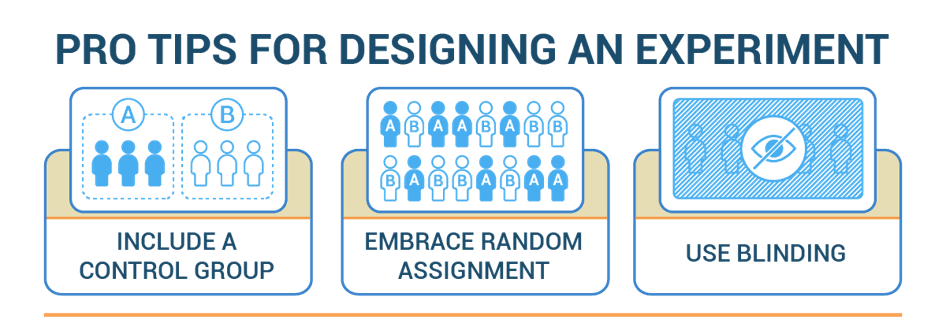When you hear the word experiment, you might be thinking, “that sounds complex and far removed from my everyday life!” But here’s the intriguing part – we unknowingly encounter the building blocks of experimental design in our daily routines. Imagine making the perfect cup of coffee or testing a new recipe. Without even realizing it, you’ve already embraced concepts like having a control group (no more bitter coffee!), using random sampling (who hasn’t taken a slice from different parts of the cake?), and employing blinding (surprise taste tests, anyone?). Today, we’ll demystify these best practices and uncover how they shape not just our coffee or cooking experiments but also our understanding of the world around us. So buckle up, as we take an extraordinary journey from our everyday lives to the realm of experimental design excellence!
Include a control group: Imagine you’re testing the effects of a new study technique. You want to see if it really helps improve grades. To uncover the truth, create a control group, like a ‘mirror image’ of your experiment. This group won’t receive the new study technique, but everything else will be the same. By comparing the control group’s results with the experimental group, you can spot the true impact of what you’re testing.
Embrace random assignment: Fairness is key! When selecting who goes into the experimental and control groups, use random assignment (random sampling). It’s like tossing a coin! By randomizing the selection, everyone gets an equal chance to be in either group. This ensures that any differences between the people in your study are just down to chance, not affecting your results.
Use blinding: Let’s keep it unbiased! Blinding is a way of ensuring that neither the participants nor the researchers know who is in the experimental group and who is in the control group. This can help prevent expectations or biases from influencing the results. There are two types: single blind (participants don’t know their group) and double blind (both participants and researchers are unaware). By keeping both sides unbiased, you ensure pure and reliable results.
